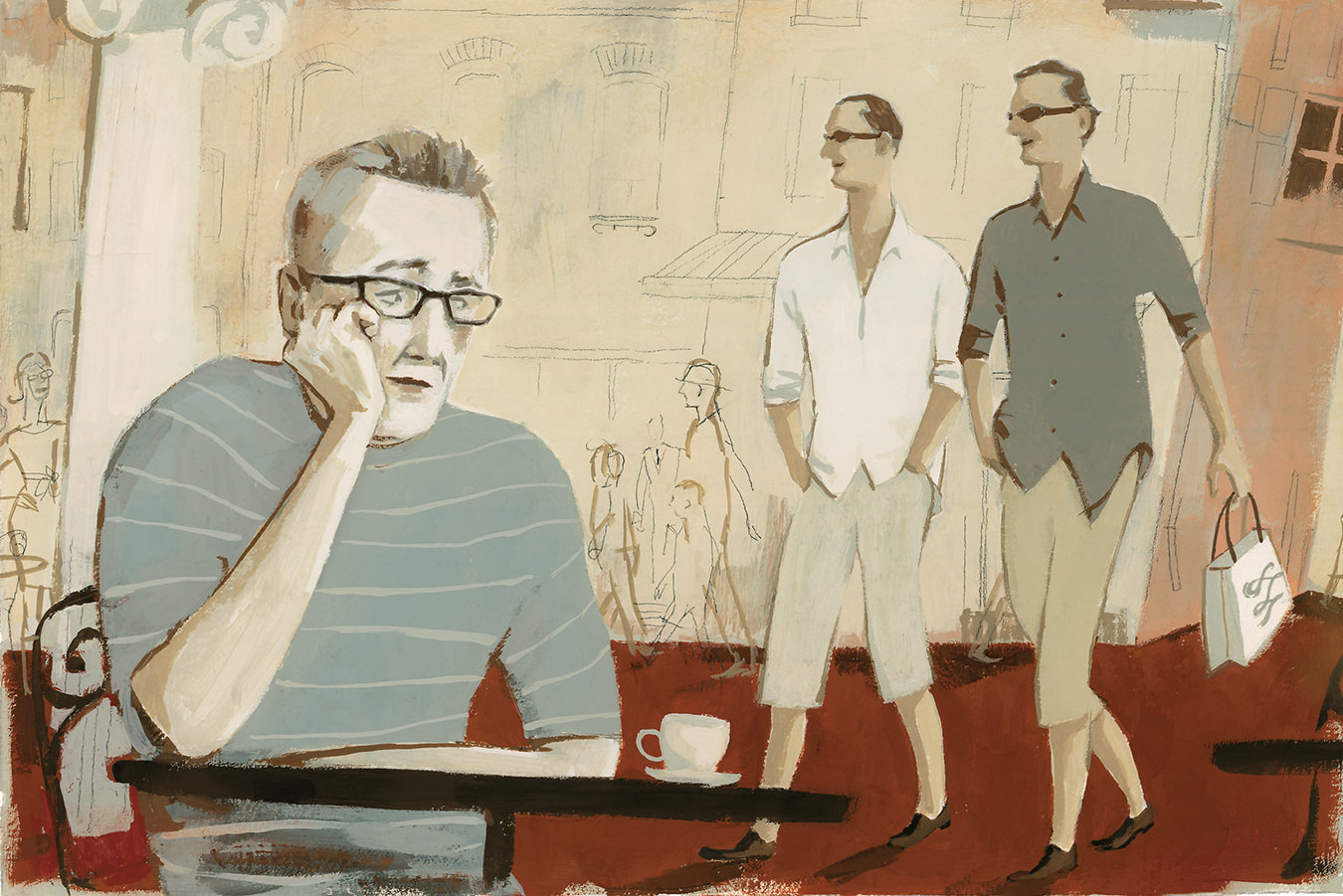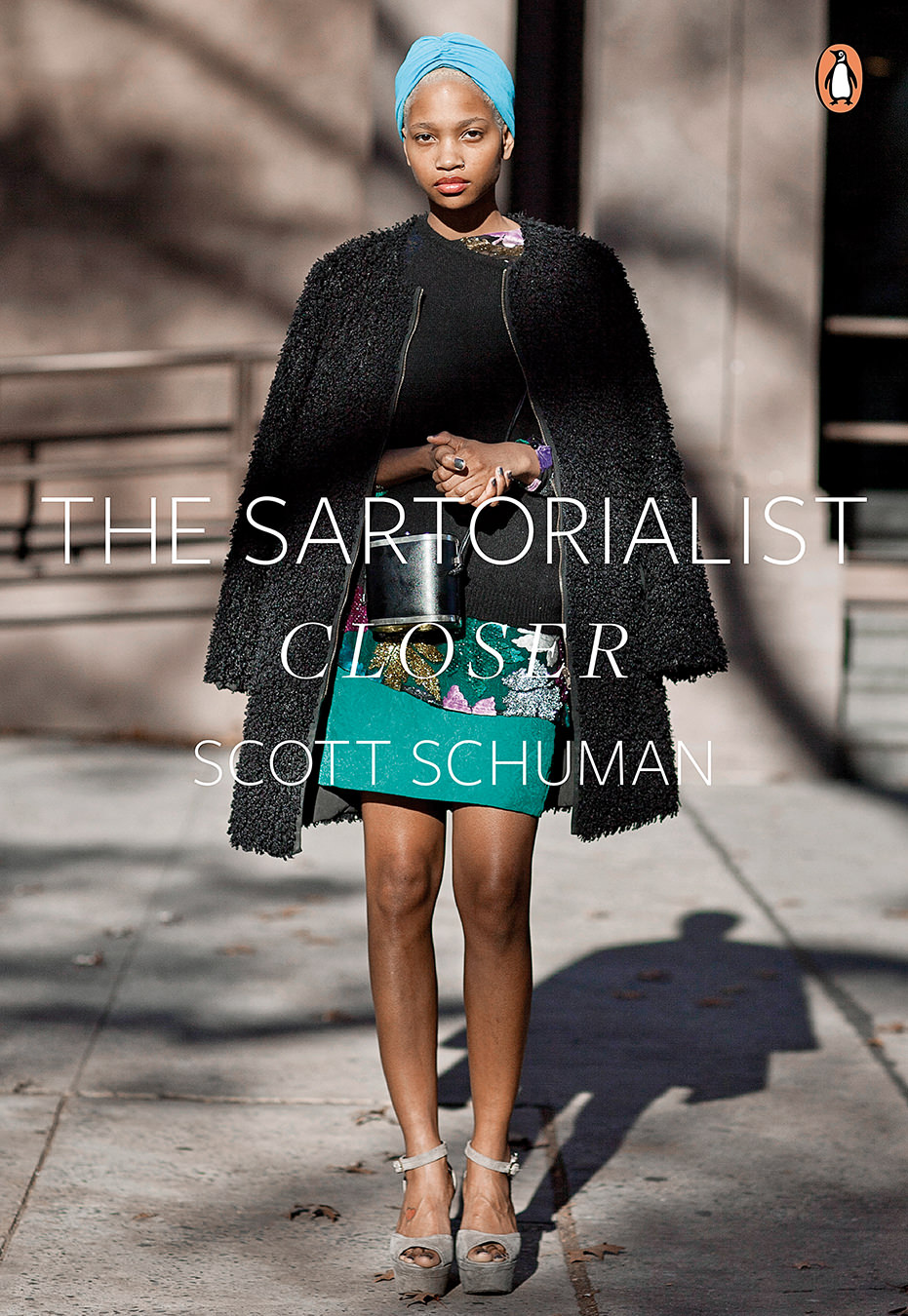Road to Armani
A lesson in style.

Just hours after arriving in Rome I am already perched at my favorite haunt, Caffe Sant Eustacchio. Located beside the church of the same name, the café serves a special variation on espresso called a Gran Caffe, and it’s worth the extra money they ask. The piazza is quiet in the early evening if you don’t count the accordion player wheezing out “Lady of Spain.” From my table I watch a few passing motorcyclists and, just beyond them, two phantoms. Trotting casually across the square, they look just as they did in the flesh two years before.
They are ghosts of memory, the lingering after-image of two men who crossed that same square during my first visit to Rome. At the time I didn’t recognize them for what they were: heralds of change. Not Road to Damascus change; road to Armani, more like. But epiphanies come in different shapes.
That trip to Rome in 2003 was my first solo voyage abroad, and it started badly. Jet lag, unfortunate encounters with locals, and most of all a fast-developing sense of self-conscious shame. I saw myself reflected in shop windows, and the other tourists around me. T-shirts, short shorts, backpacks and cheap sneakers; it was no wonder the street hawkers and swindlers went for us like mosquitoes following a carbon dioxide trail.
Then I saw the Romans. I wanted to switch teams. Romans looked great. The women were chic, some classic, some more flirtatious or fun. Occasionally you saw men wearing suits and jackets even in hot weather but most dressed casually, without ever approaching sloth. They never looked like they were trying too hard. Walking the streets of Rome, it just looked like this was the way people are supposed to dress.
I never had a sense of style. It’s a little like being colourblind. My sisters bought clothes for me at Christmas and I was grateful for the help. But the idea of fashion inspired in me nothing but vague contempt. People who cared about fashion were people with nothing else to think about, in my books. Appreciate me for my true nature, not for my clothes, was my bold credo. You’re only young once.
Having no style in Canada is one thing, but in Rome it’s another. However briefly, I had been thrust into a society with different norms. The biggest culture shock was discovering I ain’t got none. I sat in front of Sant Eustacchio that summer day and ordered espresso in apologetic English. Across the square, two young men walked. They wore untucked, collared shirts with long sleeves rolled up, pants that came down past the knee, and shoes with no socks. It was simple and yet so utterly different from my own clothes that they might just as well have been wearing the armour of Roman Centurions. Watching them I thought, that’s it. Why can’t I look like that?
Role models are the beginning. People who grow up with a longing for style usually begin with hero worship, a desire to emulate some iconic ideal like Cary Grant, Audrey Hepburn or, unfortunately, 50 Cent. At the time I didn’t realize this. So I didn’t immediately understand that my brain had punched out the image of those two young men like a steel template for my future use. But soon I did notice one thing: I was starting to shop.
At first I shopped mostly at cheap stores, suspicious of name brands that seemed to be purchased for their own sake. But eventually certain stores and labels began to draw me in for their classic appeal. I liked Emporio Armani. I probably should have given more attention to Asole & Bottoni, but I just couldn’t. Being an Armani guy is OK, but not an Asole.
My two anonymous lodestars were always before me. But I was able to adjust my direction with the help of a few bad examples as well. It’s probably lucky for me that those first role models of mine were not wearing bright orange shirts with matching sneakers, a Euro look I have encountered several times since. There are certain European men’s fashion trends that seem unlikely ever to cross the pond—for example, the predilection for pairing a dressy blazer with bright red, green, or orange pants. (But then, what do I know? I laughed at the Milanese guy with “Class” spelled out in sequins on the ass of his jeans. Turned out this was cutting-edge designer stuff.)
Along the way I discovered that I enjoyed shopping as much as anything else I did while travelling. Museums are not the heart of a city. How often do you meet the locals in one? What does the Mona Lisa have to do with Paris? If you want to understand a place, you are better off cruising the retail establishments. Shopping is a way of bonding with a city; it provides focus and interaction, a sense of involvement with the life of a community. It’s fun.
Eventually though, the return date fixed on the plane ticket matches the one on the calendar. Now comes the tricky part. Taking your example from Romans is fine when Romans are all around you. But when no longer in Rome, do you continue to do as Romans do? And if so, how do the hometown Visigoths react?
A recently published survey confirmed what many Canadian men know instinctively: most Canadian women say when it comes to male attire, there’s nothing sexier than jeans and a T-shirt. Canada is not kind to fashion-conscious men, unless that fashion expresses enthusiasm for a favorite NHL franchise. There’s something suspect about the whole sartorial thing. In this country, Mr. Dress-Up was a guy who talked to puppets.
Shopping is a way of bonding with a city; it provides focus and interaction, a sense of involvement with the life of a community. It’s fun.
If I dressed like a slob before, well, at least I didn’t stand out. My wardrobe was fairly guy-standard. Significant females might cluck with disapproval and make suggestions. But they like doing that. It’s their job. Start making the improvements yourself and see what happens.
The cast of Seinfeld memorably proclaimed: “Not that there’s anything wrong with that.” But if you’re straight and single, there is indeed something wrong with it. Surely the single, heterosexual man who pays attention to fashion does so, on some level, to gain female attention. So what happens when that starts to look like a bad strategy?
Yahoos in a pick-up truck do not have the final word on appropriate dress, of course. But there were other clues to be found. One evening I stood talking to a very attractive female acquaintance in a local nightclub. For a while we compared enthusiastic notes on shoe shopping and admired each other’s footwear. “Well,” she said finally, “I’m off to look for a cowboy!”
And away she went. Women are only too happy to talk about shoes. Just not in bed.
But human behaviour is more complex than the needs of procreation might suggest. Simple genetic determinism does not explain things like Brazilian fingernail fetishes, and it does not really explain why a guy gets hooked on fashion. So I carry on regardless. I have the bug.
Walking around the hip Shibuya district of Tokyo you are bound to run into some of the fashionable youngsters famous for taking things to extremes—bizarre make-up and oversized sleepers with bunny-ear hoods, or layers of riotous clothing in the kind of colours tree frogs use to warn off predators. This is a world unto itself, and its inhabitants dress for each other. “Normal” strategies of sexual attraction do not seem to apply.
North America is not so different; half of it, at least. Many women say they dress for themselves, and for each other. Perfectly understandable, considering the fashion sense of the average Maxim-reading man. There is a disconnect between the sort of fashions most women appreciate and the kind of clothes most men secretly want them to wear. For the enthusiastic shopper, the clothes themselves become the ultimate goal.
Perhaps it’s inevitable. People who truly love art do not buy items just to match the couch, and people who love clothes may also come to love them for themselves, not just for the effect they create. The garments float in windows, draped over mannequins, tastefully lit-objects of desire certainly, but of intrinsic beauty too. Once you develop an appreciation for well-tailored haberdashery and lovingly crafted footwear, it is only natural that you will seek them out with less regard to what the guys at the office will think. (I have a very striking pair of narrow, light-blue Italian shoes that inspired one co-worker to ask, “What did you do, mug a Keebler elf?”)
That my little epiphany took place in Rome has made all the difference. I imprinted on those Roman lads like a newborn gosling on its mom, and as a result my fashion education has proceeded along a slightly different path. A certain amount of mockery was probably inevitable.
But now as I sit at Caffe Sant Eustacchio two years on, it feels pretty good. The two phantoms who cross the square are no longer strangers. My uniform is very like their own. Following their example I have made room among my priorities, trusting that there is more than mere vanity involved in this personal reinvention. Sitting on the table beside my fine cup of espresso is a trophy of sorts. It’s a flyer, the kind handed out to Roman pedestrians on many a corner to advertise sales on clothes, or furniture, or TV sets. I’m not sure what mine is for, since it’s in Italian. But I don’t care. The important thing is, it’s in Italian. And they handed it to me as I strolled down the street, just another Roman in the throng.
Mission accomplished.




